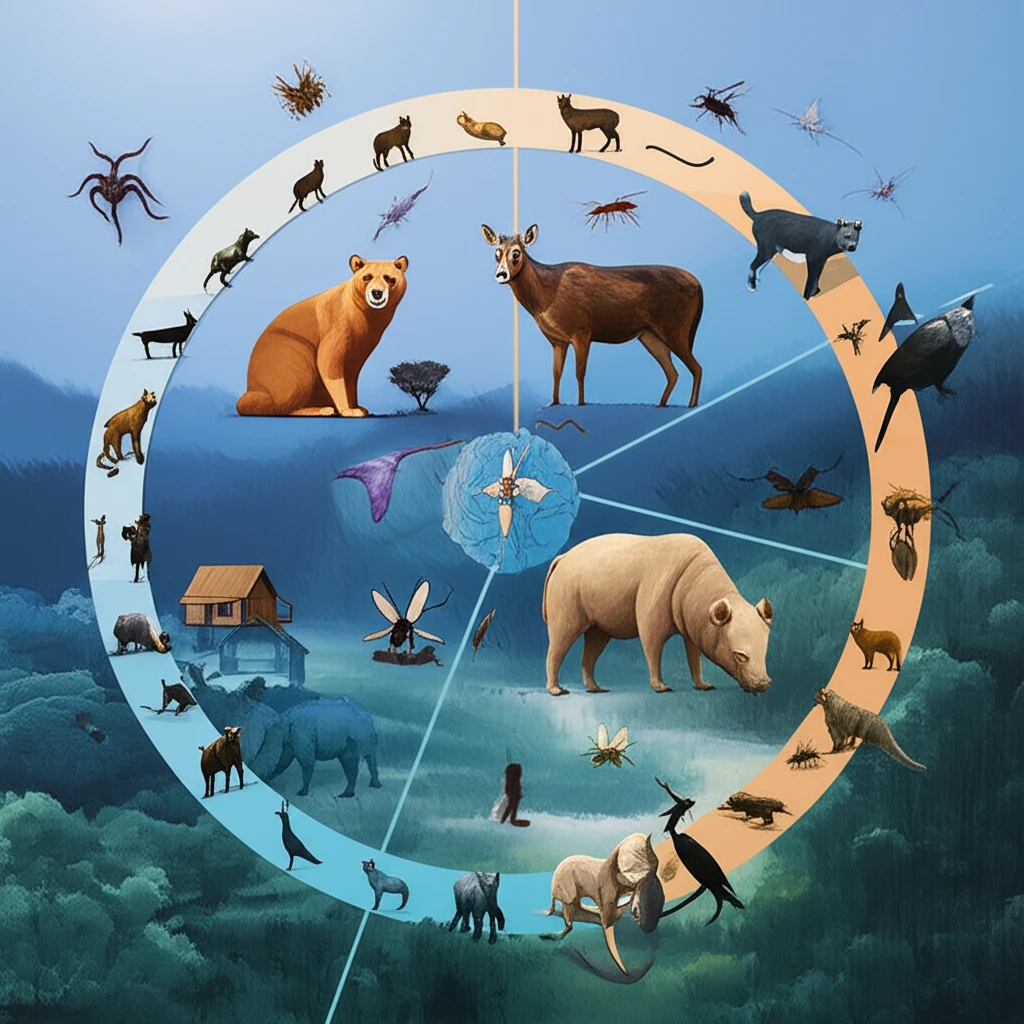
Chagas Disease: Understanding the Risks, Symptoms, and Prevention in the Americas and Beyond
"A comprehensive guide to Chagas disease, covering its ecoepidemiology, historical context, and modern challenges in both endemic and non-endemic countries."
Chagas disease, a parasitic infection caused by Trypanosoma cruzi, has been a silent threat in the Americas for centuries. The disease, maintained in nature through intricate cycles involving wild animals, vectors, and humans, presents a complex challenge for public health officials and individuals alike. Understanding these cycles is crucial for effective prevention and control.
Historically confined to the Americas, Chagas disease is now a global concern due to increased migration and travel. This globalization has introduced the disease to non-endemic regions, including North America, Europe, and even parts of Asia and Oceania, creating new challenges for healthcare systems unfamiliar with its diagnosis and management.
This article explores the ecoepidemiology of Chagas disease, tracing its historical roots and examining the modern challenges posed by its global spread. We will delve into the transmission cycles, discuss control and prevention strategies, and highlight the importance of awareness and early detection, all while clarifying the complexities of this often-overlooked disease.
What is Ecoepidemiology of Chagas Disease?

Ecoepidemiology studies the interactions between ecological factors and disease outbreaks, providing a comprehensive view of how diseases like Chagas spread and persist. For Chagas disease, this means understanding the interplay between the parasite (Trypanosoma cruzi), the insect vectors (triatomine bugs), mammalian hosts (both wild and domestic), and human populations, within their shared environment.
- The Wild (Sylvatic) Cycle: This cycle involves Trypanosoma cruzi circulating between wild animals (such as armadillos and opossums) and wild triatomine bugs. It's a natural reservoir that has existed for millions of years.
- The Peridomestic Cycle: As humans alter natural landscapes, triatomine bugs adapt to living around human dwellings, feeding on domestic animals like chickens, pigs, and dogs. This creates a bridge between the wild cycle and human populations.
- The Domestic Cycle: Triatomine bugs infest human homes, feeding on people and transmitting the parasite directly. This cycle poses the greatest risk of human infection.
Looking Ahead: The Ongoing Fight Against Chagas Disease
Chagas disease remains a significant public health challenge, particularly in the face of globalization. Continued research, improved diagnostic tools, and sustained control efforts are essential to reducing the burden of this disease in both endemic and non-endemic countries. By raising awareness and promoting early detection, we can work towards a future where Chagas disease is no longer a threat to global health.
